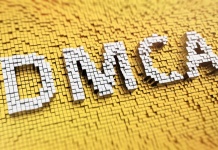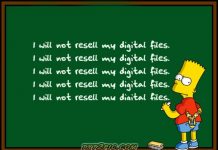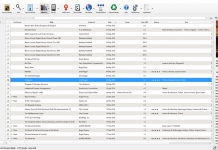 The $350 BeBook, ballyhooed as a "fully open standard eInk reader," is to get "RSS news feeds support and Wifi" in November-December. I’m not sure what the promise, made on the home page, means for existing customers. Can they upgrade? At what cost? Or is the new wrinkle only for new BeBooks?
The $350 BeBook, ballyhooed as a "fully open standard eInk reader," is to get "RSS news feeds support and Wifi" in November-December. I’m not sure what the promise, made on the home page, means for existing customers. Can they upgrade? At what cost? Or is the new wrinkle only for new BeBooks?
This Dutch-marketed reader, sold by Endless Ideas, appears to be a rebrand of the Chinese-made Hanlin V3. If nothing else, I wonder what Jinke, home of the Hanlins, might be up to on the WiFi front.
 Supported file formats of the BeBook are pdf, doc, txt, rtf, MS lit, html, djvu, chm, fb2, wolf, mp3, png, tiff, gif, jpg and bmp, and supposedly the BeBook will let you read DRMed Mobipocket in the future. The BeBook has a six-inch VizPlex screen, 512M internal memory and an SD card slot for cards up to 4G. Intriguingly you can install TrueType fonts. Perhaps a heavy font to help deal with the E Ink contrast issue. Meanwhile a customer named Ian P. Christian has recorded this YouTube video and done a review in text—I don’t know what if any arrangements he had with the company. So what are your thoughts from afar? Is there promise here? Or at $350 will the BeBook be Kindle or Sony roadkill? The $350 doesn’t include shipping. I myself don’t see this one taking off, but maybe the mix of an open approach and WiFi will make a difference for those willing to pay the steep price.
Supported file formats of the BeBook are pdf, doc, txt, rtf, MS lit, html, djvu, chm, fb2, wolf, mp3, png, tiff, gif, jpg and bmp, and supposedly the BeBook will let you read DRMed Mobipocket in the future. The BeBook has a six-inch VizPlex screen, 512M internal memory and an SD card slot for cards up to 4G. Intriguingly you can install TrueType fonts. Perhaps a heavy font to help deal with the E Ink contrast issue. Meanwhile a customer named Ian P. Christian has recorded this YouTube video and done a review in text—I don’t know what if any arrangements he had with the company. So what are your thoughts from afar? Is there promise here? Or at $350 will the BeBook be Kindle or Sony roadkill? The $350 doesn’t include shipping. I myself don’t see this one taking off, but maybe the mix of an open approach and WiFi will make a difference for those willing to pay the steep price.
Reminder: You can see at least headlines via Feedbooks’ RSS converter that turns many publications into ePub and other mainstream formats for the Kindle, the Sony and the rest. But what happens if you want to go beyond the headlines and you’re not dealing with full feeds? That’s where WiFi might help.
Tip: The BeBook review says: "For a discounted price on the BeBook, order as normal from BeBook’s site, and use ‘pookey@gmail.com’ as a coupon at checkout."
Other BeBook references: Engadget item and MobileRead thread (with photo and other discount info). Also see details on new software update, which among other things adds the .lit format and improves PDF support.
(Via Mike Cane, though we have briefly mentioned this one before).


































I must be missing something–as I see it, the first company to present an ebook reader that is modeled after the way a DVD player is operated, will get the gold. There would be almost no learning curve as so many already know how to use a DVD player. Also, it doesn’t have to be all things to all people! It only needs to let you read books easily! So many senior citizens will refuse the Kindle, the Sony, or ANY currently available ebook reader because they don’t want to or can’t learn how to operate the thing. I can just see a senior having to learn wifi and navigate a website just to put books on their reader. If there were an ebook reader that worked as I am envisioning it, my senior citizen relatives would ALL get one from me this Christmas. The moral of this story is: make it SIMPLE TO USE.
Kettir, I couldn’t agree with you more about the usefulness of e-books for the elderly, at least with the right gizmos. See earlier TeleRead posts on this topic!
Thanks,
David
Thanks for the link to my site. Just to set the record straight, I have no association with bebook – I have a discount code because they offer the ability for any customer to get their money back if they refer 10 sales. I have actually had more then 10 sales now, so the use of my code benefits only the person using it 🙂
I own a BeBook and I’m quite impressed. Main reasons for purchase? Lack of availability of Sony Reader or Kindle in NZ; poor reports about the closest competitor, CyBook; ability to read a wide range of non DRM formats; based on Linux OS rather than WinCE; ability to install FBReader to read Plucker documents; BeBook is a target platform for OpenInkPot development.
For people opposed to DRM and companies deliberately fragmenting the ebook market, BeBook, (aka iBook or HanLin V3) is a reasonable choice.
That said, it could be better – the physical design is quite utilitarian and would have benefited from some considered product design.
It’s pretty simple actually.
This week we’ll release the RSS + Mobipocket support update. (Free!)
The wifi version will be a seperate model, this won’t be a software upgrade as it needs additional hardware.
The “open” approach resulted in the most available file formats on a stand alone reader, and more important, you’re not stuck with one single company (Kindle -> Amazon, Sony -> Sony) for content. We chose Mobipocket, as it gives you the option to shop around for best prices on current/just released titles.
Still a non believer or you do own a BeBook? Drop me a line and you’re the first to have the new update.
Our goal is to keep improving our product, instead of relying on a large marketing budget and lean back.
Peter.
peter@mybebook.com
Alright, my turn. Enter “sirdouglas@hotmail.com” in the discount coupon section to get your 25 euro (35 bucks) discount on the BeBook.
http://www.mybebook.com
BeBook rules!
Doug
I’ve had a beBook for about a month now.
I’m quite happy with it. With the August software, I’d rate it as a B+ product. Its basically a work in progress.
In a nutshell:
1- it is not DVD easy, but it is generally easy to use and has good ergonomics.
2- currently it is an enthusiast product; If you’re experienced with ebook reading on PCs and PDAs you’ll be at home but I’m not sure I would recommend it to somebody unfamiliar with the plethora of formats it supports and their various idiosyncracies.
3- it has multiple reader apps accessed by a file manager that displays known file types only.
4- It understands .zips and .rars and can go inside them.
5- It supports SDHC cards (I’m currently using an 8GB card; I expect I’ll be moving to at least a 16 or 32GB card by the time I’m done setting my libraries up.)
6- As near as I can figure out, it has three, maybe four separate reader apps; one for rtf and FB that is excellent (4-way rotation, two built-in fonts, 4 font sizes, amost bug-free), and another for lit, epub, html, doc, that is usable but slow and buggy and needs work; em-dashes and ellipsis don’t get along with proportional fonts, hard page breaks and first line indents are non-existent, overly generous with inter-paragraph, and it crashes on occasion–the zoom and rotation functions are well-nigh useless).
7- The epub reader is very lenient; it handled files that Adobe refused to open for being non-compliant.
8- True Type support is not available on the more mature and much more stable rtf reader app, only two built-in fonts; Times and Arial. It is, however very solid (only a couple of crashes in a month of heavy reading).
For *my* needs, structured around the Black Mask and Gutenberg collections (the latter I’ve cleaned up with Guitenmark, renamed and sorted, and converted to rtf and .mobi) and Baen Webscriptions, the BeBook is a good fit.
– The ergonomics are good
– the reader is light and reasonably solid (its plastic, not metal)
– the battery is replaceable and battery life is very good (7-10 days of heavy usage–7000 pages per charge is an honest claim)
– it charges via USB
– boot up is reasonably fast; about 30 seconds
– file manager, again, reasonably fast; opening a folder with hundreds of files takes maybe 30 seconds
– nested folders are not an issue and it hasn’t choked navigating the 14,000-plus english books from Gutenberg
I am hoping the lit/epub app gets significantly improved with the next firmware and brought up to the quality level of the RTF app, at which point I might be ready to recommend it to mainstream readers. As it stands, its a very good RTF *document* reader with flawed support for mainstream ebook formats.
They’re on the right track but its an immature product.
I agree that the BeBook is an immature product, and I also agree with most of the points above, but both the ergonomics and file manager/library interface are terrible. As both a product designer and long term e-book reader I think the BeBook device has lots of room for impovement. Sure, you automatically adjust to the way it is, but you shouldn’t have to.
The largest most easily reached button has nothing to do with page turning, and that is the function most often repeated with an ebook. Splitting the round button into two unequal smaller parts is just cute and not actually a good design.
The real page turn buttons are mixed in with the other standard buttons, and even the extra page turn buttons are the same size and not in a comfortable location. More and bigger page turn buttons would be a great improvement.
The library interface is terrible; it only displays 8 items at a time, and there are not even rudimentary built in management features – for example, there is no way to mark a book read or to delete it from the device. Even the basic Plucker reader on Palm allows you to do these things. On the plus side, though, at least the BB handles nested folders.
This is definitely an early example of an immature product, and on that basis I’m very happy with mine, but it really could be so much better.
The big deal for me, is that the BB can read Plucker documents (though I wish it would do this out of the box). Plucker is my common document format for all my portable devices; it also integrates into my web browsing habits. I’ve written an article about this aspect of Plucker at http://hindesite.wordpress.com/articles/plucker-e-book-workflow/ which explains why Plucker is such a big deal.
rjh – not really disagreeing with you but two thoughts come to mind:
1- On the file manager, I agree that more interactivity with the listings would be good. But… Adding a lot of interactivity beyond file navigation and launching comes at a price. To properly do everything most readers would want would require an actual database app for a bookshelf, not just a file system manager. And my experience with other ebook reader devices and apps says that those *always* come with a penalty in performance, number of volumes they can track before bogging down, startup time, or all of the above. Just last week I tried to input my cobbled-up Gutenberg collection into Mobipocket desktop via import and after 12 hours it locked up with only a third of the volumes inported. Opening them manually on a one by one basis works without a gripe but batch import didn’t. And just copying the files into the ebooks folder resulted in a reader app that didn’t finish initializing after 4 hours.
I’ve run into similar issues with pretty much all book reading apps on PCs, cellphones, PDAs and dedicated readers. In fact, the most common gripe you hear is the request for nested folder in the bookshelf apps.
Now, I do think a clever programmer could use the Fat32 attribute tags to implement some kind of management features, flagging files as opened, finished, etc but even that could get tricky when loading up the flash card.
Whatever else you may say about the beBook bookshelf it is clean, reasonably fast and it lets you organize the books *your* way. I’d rather have minimal functionality and maximum flexibility than the converse. YMMV, natch! 🙂
2- On the buttons and ergonomics… Yeah, but… My baselines for ebook ergonomics are the Reb1100 for dedicated readers and the HP Jornada 56x series for small form factor readers. I believe that no ebook reader really needs more than 6-7 buttons. That ebook readers need a gutter. And that ebook readers need to be symmetrical if screen rotation is to have any real value. BeBook (in RTF-reader mode) comes closest to meeting those requirements than any product on the market, which is admittedly a backhanded compliment since it doesn’t actually meet any of them. 🙂 Its just better than the 50-button kindle and the 30 button Sony…
I would simply ditch the number buttons and use the paging buttons to scroll through the listingsgadget designers in this GUI age seem to have forgotten the virues of cursor control pads…
That said,while I prefer the paging buttons were bigger and centrally placed along the left edge (with a gutter around them) I do find the current placement acceptable as long as I hold it with my left hand (which is my prefered reading mechanic) and rest the bottom edge on my stiff pinkie. (Took a bit of practice but it does let me immersively page by just pressing down with my thumb.) Ergonomically it seems to work as I experience no strain even after hours in a reading session.
Ergonomics, of course, is somewhat a matter of preference; I’m right-handed but I read hold the book with the left. Always have. Treeware, pdas, tablets, and now the BeBook. I have a friend who’s a lefty holds them with the left with no complaints but I can see somebody seeking to hold the BeBook with the right hand might have issue since (for my hand) the thumb naturally falls atop the page-back (9) button, not the page-forward (0) button.
Personally, I’d rather they got rid of the number buttons altogether and used the paging buttons as up-down and left-right for on-screen navigation. Add two buttons for Menu/enter and back/escape and you’re in business with just 6 buttons.
The best we can hope for is that some future reader vendor actually pays attention to ergo issues as least as well as RCA did when building the original Reb-1100 last century. 🙂
But in the meantime, we muddle through and hope for the best with future software updates, no?
Felix – I guess my e-reading experience is somewhat different to yours, being Palm and Nokia based. The Plucker reader on Palm has no problems associating metadata with plucker files, and I have hundreds of documents that the reader has to scan when starting, yet start time is still pretty quick. Plucker tracks bookmarks, categories, read/unread and some other things.
The advantage for Plucker, of course, is that it only has to do this for one file type, whereas with it necessary to support so many different file types on e-readers, the task is more complex.
However, BB tracks bookmarks and current position across all these filetypes; surely adding read/unread wouldn’t be a big deal?
I nearly mentioned in my comment that Palm navigation in Plucker reader is done mostly through a 5-way navigation pad; FBreader on Nokia achieves reasonable navigation using fewer keys than the BB has. I agree that the BB (with some thought) could do more with less keys, (already, my device has extra functionality from long pressing some buttons).
I’m hopeful that there will be future development of firmware to improve the device, and to that end I hope the device as it currently stands is produced for long enough to get a reasonable developer base, even if it undergoes some external changes. There is a risk that Jinke may make some changes that discourage third party development (Sandisk did this with rockbox on their mp3 players by changing the internal hardware of the Sansa e260 series).
I hope OpenInkPot gets up to speed reasonably quickly; it is one of the main reasons I bought a BB, and one of the main points of difference from Kindle and Sony.
I purchased a BeBook recently and am very happy with it. I’d definitely recommend it to anyone considering an e-reader.
The people at Endless Ideas do seem very genuine in responding to customer requests and needs and have been releasing firmware updates regularly. There is also an active forum community to help sort out any problems.
If you are thinking of purchasing one from the http://www.mybebook.com website, feel free to use my email address to receive a 25 Euro discount. As mentioned above, this helps me out as well so it’s a win-win situation.
My email address is ruthgar@hotmail.com
Cheers,
Adam
To get a 25